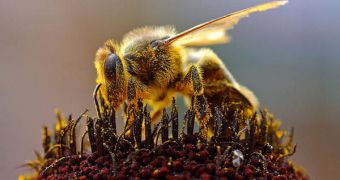Scientists have been amazed to discover that honeybees are in the habit of alerting other members of their hives of dangers they encounter among the petals. In experiments, scientists placed the bodies of dead bees in certain flowers, and then observed how the insects reacted when they found them. Unsurprisingly, they steered clear of those plants, but, in a twist, they were also shown to return to the hive and warn others about what they saw through their famous waggle dance. Details of the amazing find appear in the latest issue of the journal Animal Behavior, the BBC News reports.
The waggle dance, which is the bees' favored method of communication, was first discovered and deciphered by biologists more than four decades ago. In essence, when drones return from collecting pollen, they start performing a very complex series of motions, whose angle and velocity apparently tell other bees, less able to orient themselves, where the most reliable and safe source of food is. The dance also reveals the general direction of the best flower fields to be picked. Through this mechanism, bees ensure that maximum yields are collected with each flight.
Biologists from the University in Hamilton, Ontario, Canada, led by scientists Kevin Abbott and Reuven Dukas, have revealed in their latest study that the waggle dance does more than simply convey sucrose-rich locations to other members of the hive. In the experiments, bees were trained to visit two artificial flowers, each endowed with the same amount of food as the other.
After the bees knew the routes, one of the flowers was left untouched, while the other received the bodies of two dead bees. The carcasses were placed in such a manner that they were visible to incoming bees, but would not hinder the foraging, if the insects were to land on the flower.
The two then analyzed the behavior of the creatures upon their return from both flowers. In the case of those who just visited the safe one, they recorded about 20 to 30 times more waggles than in the case of those returning from the one with the bee bodies. This type of behavior seems to indicate that the drones were aware of the danger and, therefore, did nothing to convey the dangerous location to the other members of the hive.

 14 DAY TRIAL //
14 DAY TRIAL //